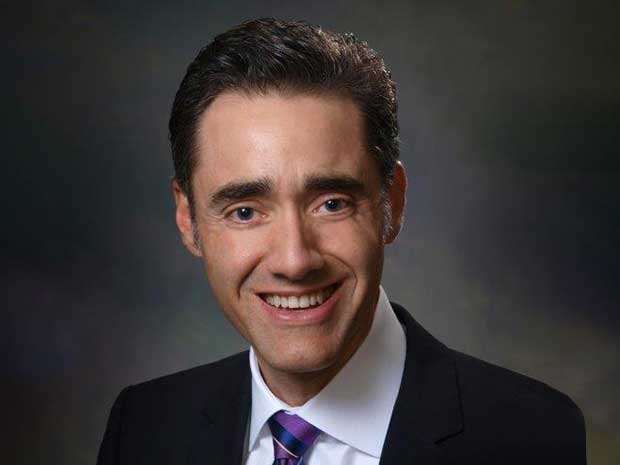Executive summary: OECD releases new administrative guidance
The Organisation for Economic Co-operation and Development (OECD) / G20 Inclusive Framework (IF) on Base Erosion and Profit Shifting (BEPS) has provided taxpayers with another transitional safe harbor for the Pillar Two rules. This safe harbor is outlined in the second set of Administrative Guidance on the Global Anti-Base Erosion (GloBE) rules, released July 17, 2023, which provides several items of much needed and welcomed guidance and importantly this new transitional under-taxed profits rule (UTPR) safe harbor. The new transitional UTPR safe harbor provides that any taxpayer with an ultimate parent entity (UPE) based in a jurisdiction that has a statutory corporate income tax rate of at least 20% may elect to not be subject to the UTPR in the first two years of the GloBE rules.
The transitional safe harbor will apply to fiscal years that run no longer than 12 months that begin on or before Dec. 31, 2025, and end before Dec. 31, 2026.
Transitional Pillar Two safe harbor
What is Pillar Two?
The Pillar Two initiative consists of two primary rule sets:
- The subject to tax rules (STTRs) which are focused on withholding tax rates on certain payments from developing countries to IF members, and
- The GloBE rules which are quite developed now and in the process of being enacted in many countries around the world.
GloBE aims to impose a global minimum corporate tax of 15% on adjusted net income on large international businesses (i.e., companies with consolidated revenues above 750 million euros or equivalent) regardless of the location of the business’ headquarters or jurisdictions in which the business operates. In essence, the GloBE rules will top up the tax burden on a jurisdiction-by-jurisdiction basis to ensure that each jurisdiction is at a 15% tax rate.
The GloBE rules are complex in their administration and comprise a series of top-up taxes to achieve the 15% rate. The top-up taxes are levied through tax law implementation in the local countries and can be levied at three levels in the following order:
- Qualifying domestic minimum top-up tax (QDMTT): First, the jurisdiction in which the undertaxed entity is resident is allowed to levy the top-up tax. Jurisdictions will have a significant incentive to introduce a QDMTT because in the absence of such a tax, profits of multinationals from that jurisdiction could be taxed elsewhere under the other two levels (see below).
- Income inclusion rule (IIR): This rule is akin to a controlled foreign corporation (CFC) rule and provides for top-up tax up the chain, where an (in)direct parent is allowed to levy the top-up tax. A top-down approach is used in this regard meaning that UPEs will have the first taxation right and thereafter the intermediate parent entities.
- UTPR: This tax acts as a backstop rule and only applies to the extent that any top-up tax has not been levied though a QDMTT or IIR. Under the UTPR, top-up tax is allocated to jurisdictions based on the substance the group has in different jurisdictions.
The Pillar Two GloBE initiative enters into force in stages with the first rules being enacted for tax years beginning on or after Dec. 31, 2023 (e.g., 2024 calendar year taxpayers).
The GloBE rules are extremely data-intensive and require much global coordination in order to perform the group calculations of QDMTT, IIR and UTPR. The sources of the data required will likely stretch far broader than an entity’s enterprise resource planning (ERP) system and require much planning and resources to obtain complete and accurate data.
Transitional CbCR safe harbor
In Dec. of 2022, the OECD released guidance that introduced two safe harbors, the transitional CbCR (country-by-country reporting) safe harbor and the permanent safe harbor, along with penalty relief, to address stakeholder concerns about:
- The “complexity of some of the calculations and adjustments to financial income and taxes required under the GloBE rules,”
- How “the GloBE rules could impose a disproportionate compliance burden on certain MNEs in respect of their operations in high-tax and other low-risk jurisdictions” and
- Issues that “were likely to be particularly acute in the initial years in which the rules were being introduced as MNEs and tax administrations were coming to terms with the operation of the rules.”
This welcome, and potentially labor-saving, guidance provides taxpayers relief during a transitional three-year period of the GloBE rules coming into effect. The transitional CbCR safe harbor rules would simplify the calculations required during this transitional period based on data (or amounts) provided on a “Qualified Country by Country Report.” For a U.S. taxpayer this is Form 8975, Country-by-Country Report, and Schedule A (Form 8975), Tax Jurisdiction and Constituent Entity Information. A taxpayer can generally elect to rely on the Transitional CbCR Safe Harbor if they meet one of the following three tests:
- De minimis test: Revenue is less than EUR €10 million and profit (loss) before income tax is less than EUR €1 million.
- Simplified ETR (effective tax rate) test: Income tax expense from the financial statements, adjusted for uncertain tax positions and non-covered taxes, compared to profit (loss) before income tax is greater than or equal to the transition rate in the applicable jurisdiction for the year (e.g., 15% in 2024).
- Routine profits test: The entity’s substance-based income exclusion (SBIE) amount is greater than or equal to profits before income tax.
The top-up tax within a jurisdiction is deemed to be zero should a taxpayer elect to rely on this safe harbor.
Taxpayers relying on the transitional CbCR safe harbor would provide potential relief for a constituent entity from the requirement to gather all of the detailed data on a constituent entity by constituent entity basis and then perform the GloBE calculations. Thus, many companies are currently reviewing their process for preparing their Form 8975 to ensure it is accurate and would be a “qualified” CbCR and then performing an analysis to see whether one of the three transitional CbCR safe harbor tests would likely be available in 2024 and the subsequent two years – 2025 and 2026.
Transitional UTPR safe harbor
The newly introduced transitional UTPR safe harbor from July’s OECD release provides member nations and their tax residents more time to:
- Assess the impact of the GloBE rules and
- For countries to reform their existing corporate income tax regimes to adjust to Pillar Two.
Many countries are adopting QDMTTs (prior to the Pillar Two GloBE initiative entering into force (e.g., 2024 calendar year taxpayers)) to protect their rights to tax their residents.
According to the OECD, “the short transition period is designed to ensure that the safe harbor does not serve as a disincentive for jurisdictions to adopt the GloBE rules or as an incentive for multinational enterprise (MNE) groups to invert into a jurisdiction that has not yet adopted a QDMTT or to shift profits into UPE jurisdictions that have lower ETRs.”
MNEs that qualify for more than one safe harbor may choose which safe harbor to apply for that jurisdiction.
What are the key takeaways from the new OECD Pillar Two guidance?
The U.S. imposes a corporate income tax rate of 21% plus state and local income taxes, and thus, U.S. MNEs ought well be able to take advantage of the transitional UTPR safe harbor should they choose. The two-year delay in the application of UTPRs to such UPEs is a welcome development, but far from a long-term solution. Many U.S. taxpayers have been concerned that due to the fact that they may obtain favorable U.S. research and development (R&D) tax credits combined with the other vagaries of the GloBE calculation with respect to valuing deferred tax expense that the U.S. UPE may not have a 15% ETR for GloBE purposes. Thus, certain non-U.S. jurisdictions may implement a UTPR effective in 2024 or 2025 and essentially collect a top-up tax on the shortfall of the U.S. tax rate from the required 15% GloBE minimum tax rate.
The OECD guidance did not specifically reference the United States but in the OECD’s explanation of the new safe harbor provision, the OECD explained that it would be difficult for the UPE in a country that did not enact a QDMTT to avoid a UTPR imposed by another jurisdiction absent this temporary relief. Thus, this new safe harbor is another option for taxpayers to consider as they evaluate the impact of the GloBE rules to their organizations.
It should be noted that the OECD was clear in its guidance that if a taxpayer qualified for both this new transitional UTPR safe harbor as well as the previously announced transitional CbCR safe harbor that under the “once out, always out” approach the transitional CbCR safe harbor would not be available in a later year for a jurisdiction. Therefore, careful consideration of the availability of the various safe harbors and their applicability along with projecting the GloBE positions in years 2024 to 2026 would be a recommended practice in order to elect the proper safe harbor in the most advantageous manner.
Nearly 140 countries have agreed to the OECD’s two-pillar global tax plan, including the United States. However, U.S. tax law has still not adopted the GloBE rules; thus, the U.S. has not enacted any QDMTT, IIR nor UTPR rules. This could subject U.S.-parented MNEs to the UTPR on its low-taxed U.S. parent company income.
Once the two-year transitional period ends, U.S. MNEs will likely become subject to UTPRs on their U.S. income without any apparent source of relief. This means that foreign countries will be able to collect this top-up tax on U.S. entity profits, as opposed to the United States government. Foreign countries are well-positioned to reap the benefit of the U.S. government’s lack of adoption of the GloBE rules.
Pillar Two continues to be a very dynamic international tax topic. Taxpayers are well-advised to monitor the status of recently enacted and developing tax legislation in the countries in which they operate as well as to follow the latest releases from the OECD. Taxpayers are recommended to evaluate the application of potential safe harbors as well as to begin to plan to gather data and perform GloBE calculations by evaluating the required data and the potential top-up taxes that may apply.
Final reminders
The guidance described in this alert is currently the latest release on the safe harbor topic but may very well be changed by the OECD or various member countries as they incorporate the OECD rules into their local tax law. Taxpayers should contact their advisors to better understand how the most recent guidance may affect their tax obligations.




